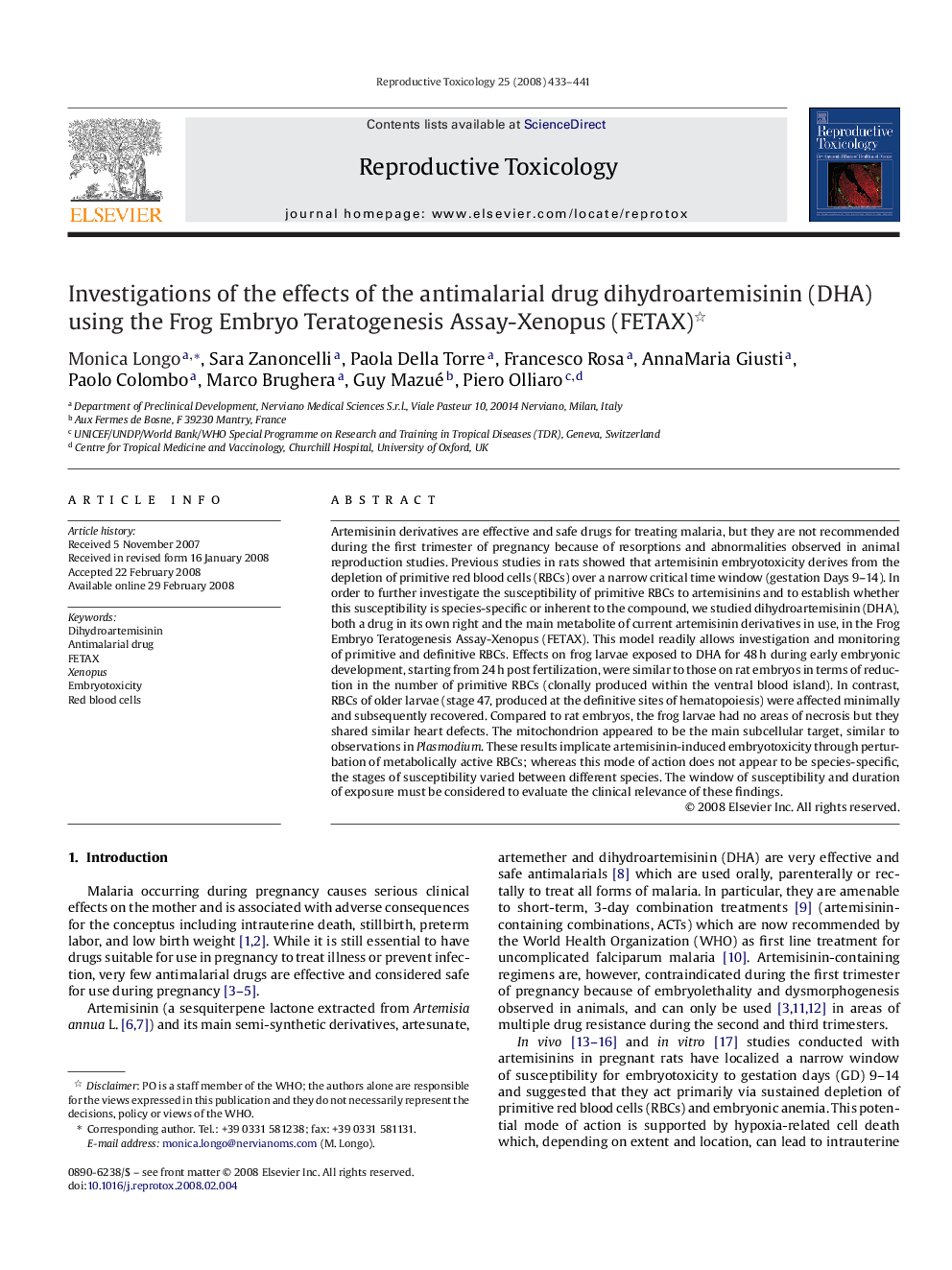| کد مقاله | کد نشریه | سال انتشار | مقاله انگلیسی | نسخه تمام متن |
|---|---|---|---|---|
| 2595181 | 1132297 | 2008 | 9 صفحه PDF | دانلود رایگان |

Artemisinin derivatives are effective and safe drugs for treating malaria, but they are not recommended during the first trimester of pregnancy because of resorptions and abnormalities observed in animal reproduction studies. Previous studies in rats showed that artemisinin embryotoxicity derives from the depletion of primitive red blood cells (RBCs) over a narrow critical time window (gestation Days 9–14). In order to further investigate the susceptibility of primitive RBCs to artemisinins and to establish whether this susceptibility is species-specific or inherent to the compound, we studied dihydroartemisinin (DHA), both a drug in its own right and the main metabolite of current artemisinin derivatives in use, in the Frog Embryo Teratogenesis Assay-Xenopus (FETAX). This model readily allows investigation and monitoring of primitive and definitive RBCs. Effects on frog larvae exposed to DHA for 48 h during early embryonic development, starting from 24 h post fertilization, were similar to those on rat embryos in terms of reduction in the number of primitive RBCs (clonally produced within the ventral blood island). In contrast, RBCs of older larvae (stage 47, produced at the definitive sites of hematopoiesis) were affected minimally and subsequently recovered. Compared to rat embryos, the frog larvae had no areas of necrosis but they shared similar heart defects. The mitochondrion appeared to be the main subcellular target, similar to observations in Plasmodium. These results implicate artemisinin-induced embryotoxicity through perturbation of metabolically active RBCs; whereas this mode of action does not appear to be species-specific, the stages of susceptibility varied between different species. The window of susceptibility and duration of exposure must be considered to evaluate the clinical relevance of these findings.
Journal: Reproductive Toxicology - Volume 25, Issue 4, August 2008, Pages 433–441